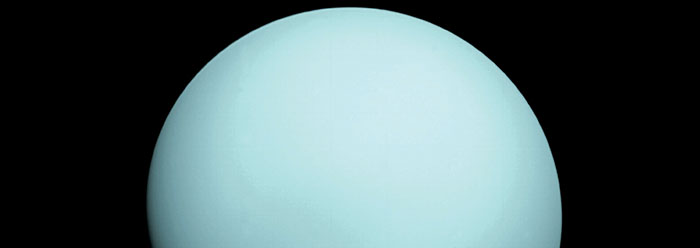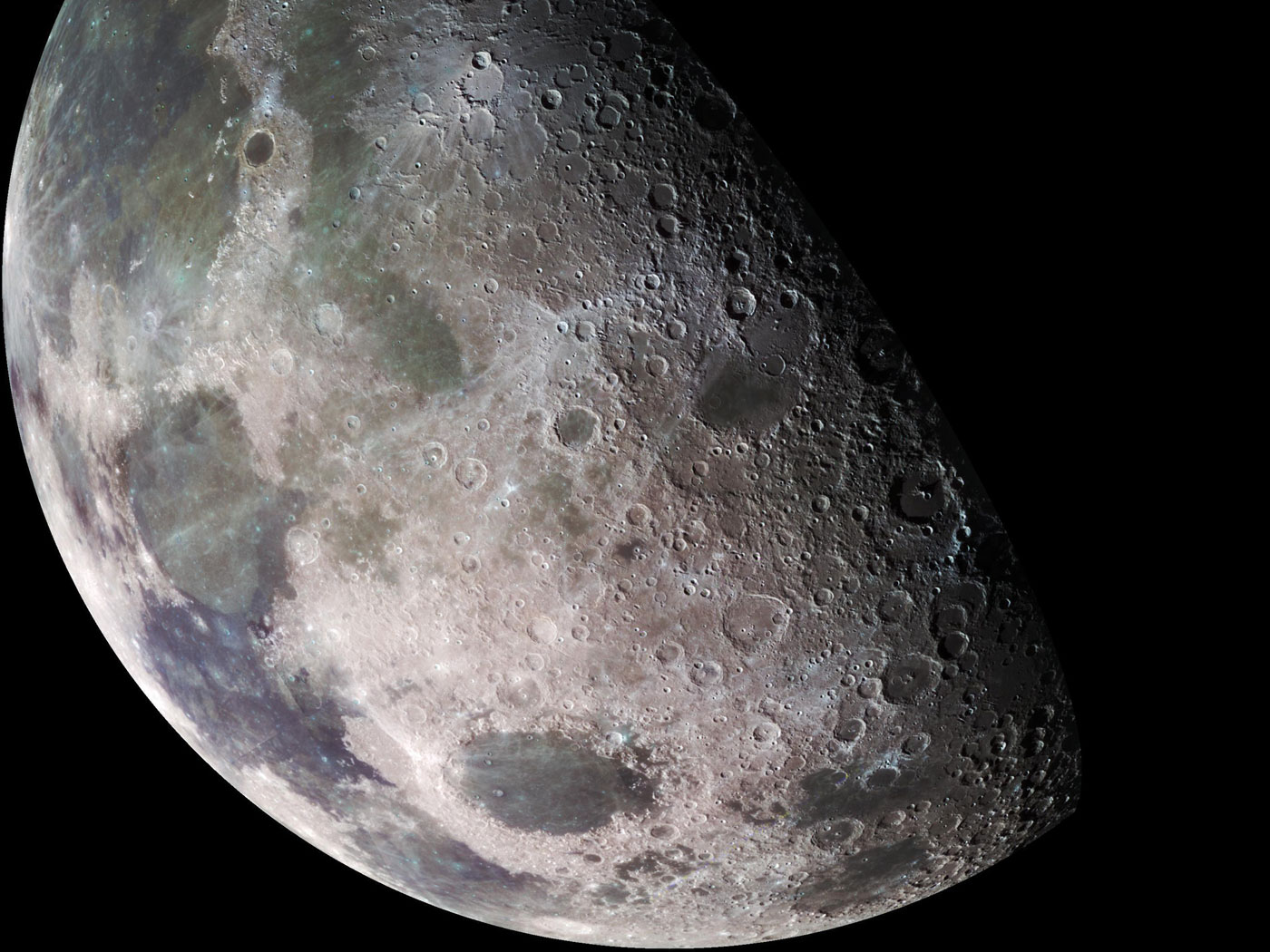For millennia, the science of astronomy was limited to observations that could be made with the unaided eye. That changed in the 1600s with the invention of the telescope. As telescopes grew in size and optical quality, these marvelous instruments enabled astronomers to detect and investigate astronomical phenomena that are difficult or impossible to see with the unaided eye. Not least among these was the discovery of a previously unknown planet—Uranus.
Discovery
Sir William Herschel discovered Uranus on March 13, 1781. Herschel was a skilled astronomer, having constructed and used many different telescopes. With assistance from his sister Caroline, he systematically cataloged thousands of deep sky objects—i.e., celestial objects lying beyond the solar system. His survey formed the initial basis for what would become the New General Catalogue (NGC) of celestial deep sky objects that is still used by astronomers today. Herschel also specialized in observations of binary stars.
It was during his systematic cataloging of binary stars that Herschel observed a small, light-blue disk. It could not have been a star since stars, which appear as shimmering points in a telescope, are too distant to appear as disks. But this unusual object did appear as a small sphere with definite size. Hershel initially supposed it to be a comet. But as he tracked the object over several nights, he found that it did not move like a comet. Comets generally have highly elliptical orbits, but the extrapolated orbit of this blue disk was nearly circular. It had to be a planet.
Herschel decided to name this new planet Geordium Sidus (Georges’s Star) to honor King George III. The choice was popular in England. Unsurprisingly, the international astronomical community rejected this name. Some favored naming the planet after Herschel, but tradition ultimately prevailed. The other five known planets (excluding Earth) were all named after Roman gods.1 That trend would continue, somewhat modified, with the new planet being named after the Greek god of the sky—Uranus (YOOR-un-us).2 Since Uranus is skyblue in color, the choice seemed fitting.3
Although Herschel is considered the discoverer of Uranus, he was not the first person to see it. In the year 1690, John Flamsteed observed Uranus and cataloged it as the star 34 Tauri. Pierre Lemonnier also observed Uranus multiple times in the 1750s and 1760s, but neither he nor Flamsteed recognized the object as a planet. This is understandable. Uranus is a tiny blue disk and moves very slowly compared to the other planets. The planet is easily visible in binoculars but appears indistinguishable from a star at such low magnification. Patient observers with keen vision and dark skies may be able to see Uranus with the unaided eye—but just barely. For this reason, it is likely that many ancient astronomers also saw Uranus but failed to notice its slow movement relative to thousands of brighter stars.
Properties
Uranus orbits the sun at an average distance of 1.79 billion miles—over 19 times farther out than Earth. At such a distance, Uranus takes 84 years to orbit the sun. The planet is four times the diameter of Earth. Its outer composition is similar to that of Jupiter and Saturn—mostly hydrogen and helium gas, with a small percentage of methane. Based on its density, the interior of Uranus is thought to be composed of various ices such as water, ammonia, and methane. For this reason, Uranus is sometimes referred to as an ice giant rather than a gas giant like Jupiter or Saturn.
Detailed study of Uranus with Earth-based telescopes has been difficult due to the extreme distance. The Voyager 2 spacecraft provided the most detailed images to date when it flew past Uranus in 1986, generating pictures of a nearly featureless blue sphere without the prominent belts and zones found on Jupiter and Saturn.4,5,6 Though it appeared bland during the Voyager 2 flyby, Uranus does manifest white clouds on occasion that are detectable in large, Earth-based telescopes.
Uranus has a system of rings that are quite different from the rings of Saturn. Saturn’s main rings are broad sheets of orbiting material, whereas the rings of Uranus are more like a series of 13 thin ropes. Each of these ropes encircles Uranus at a discrete distance, and all are in the plane of its equator. These rings were discovered in 1977 when Uranus passed in front of a bright star. Astronomers were monitoring the brightness of the star in order to assess the atmosphere of Uranus in the brief moment when the planet just began to cover the star.7 Much to their surprise, the star “winked out” five times before Uranus passed in front of it and again five times afterward. They correctly deduced that a system of five narrow rings surrounds Uranus. The other eight rings were detected at a later date. Since their initial discovery, Uranus’ rings have been imaged directly by the Voyager 2 spacecraft and also by the Hubble Space Telescope.
Unlike any other planet, Uranus rotates on its side. That is, the rotation axis is tilted approximately 90 degrees relative to the planet’s orbital plane.8 Consequently, Earth-based telescopes are able to look almost directly down the polar axis of Uranus every 42 years during the planet’s summer or winter solstice. Since the rings orbit around Uranus’ equator, they too are sideways, as are most of its moons. The extreme tilt of Uranus is contrary to the expectations of the secular model of solar system formation. Under this model, the planets ought to have formed such that their rotation axis is nearly perpendicular to their orbital plane. Only Jupiter and Mercury meet this expectation. Secular scientists usually attribute the disagreement between observations and their theory to being the result of some giant impacts in the distant past that knocked the planets from their original vertical orientations.
Moons
Uranus has 27 known moons. Two of these, Oberon and Titania, were discovered by William Herschel in 1787 and are the largest and brightest moons of the Uranus system. Yet, they are less than half the diameter of Earth’s moon. The moons Ariel and Umbriel were discovered in 1851, and little Miranda was discovered in 1948. These constitute the five major moons of Uranus, all of which can be seen in a medium-size backyard telescope under very dark skies, though Miranda is particularly challenging.
The remaining 22 moons are much smaller, all being less than about 50 miles in radius and generally non-spherical.9 They were discovered during or after the Voyager 2 flyby in 1986. The naming of these moons began a new tradition—they are all named after Shakespearian characters (mostly from The Tempest) or characters from Alexander Pope’s poetry.10 John Herschel, the son of William, began this new custom to honor his English heritage.
The Uranian moons are all composed of various combinations of rock and ice. Thirteen orbit close to the planet in nearly perfect circles. Next out are the five major moons. In order of increasing distance from the planet, they are Miranda, Ariel, Umbriel, Titania, and Oberon. They also orbit in nearly perfect circles and all in the planet’s equatorial plane. All 18 inner moons orbit prograde—in the same direction that Uranus rotates. Beyond Oberon, there is a considerable gap before we encounter the remaining nine moons. The orbits of these outer moons are not in Uranus’ orbital plane, and each has its own unique orbital plane. Eight of the nine have retrograde orbits—opposite the direction that Uranus rotates. This pattern of regular, prograde, coplanar moons being close to the planet and irregular, non-coplanar moons being at a greater distance seems to be a common feature of planets in the solar system.
Magnetic Riddles
The orientation of Uranus’ magnetic field is quite unusual. Most planets have a magnetic field that is approximately aligned with their rotation axis. Not so with Uranus. The magnetic axis is offset from the rotation axis by an astonishing 60 degrees. Moreover, the magnetic axis does not pass through the center of the planet but is offset to one side by roughly one third the radius of the planet. From a secular perspective, it is mystifying that Uranus should have a magnetic field at all. Magnetic fields naturally decay with time and should be nonexistent in planets that are billions of years old.
On the other hand, the magnetic field of Uranus fits perfectly with biblical creation. In 1984, creation physicist Russ Humphreys predicted the magnetic field of Uranus based on the amount of magnetic decay that would have happened on the planet in the 6,000 years since its creation.11 Voyager 2 confirmed this prediction. Although the presence of a strong magnetic field on any planet is a confirmation of recent creation, this is especially the case for Uranus.
Here’s why this challenges the secular view: To salvage their belief in billions of years from the contrary evidence of planetary magnetic fields, secular astronomers usually invoke a magnetic dynamo. A dynamo is a device that turns mechanical energy into the electrical current necessary for a magnetic field. Secular scientists have proposed that mechanical motion due to heat in a planet’s interior somehow forms a dynamo, thereby regenerating the planet’s magnetic field over millions and even billions of years. But of the four giant planets in our solar system, Uranus alone lacks any measureable internal heat. So, there is no power source for the dynamo. Also, dynamo models predict that the magnetic field axis must be fairly well aligned with the rotation axis. Uranus violates this condition as well.
Conclusion
The first planet to be discovered in modern times, Uranus is a diverse world of unique splendor. Its sky-blue disk is an enjoyable sight in a backyard telescope, and to spot its moons is a fun challenge. The properties of Uranus are fascinating and confound the secularists but clearly declare God’s glory.12
References
- The other five planets known at the time were Mercury, Venus, Mars, Jupiter, and Saturn. Neither Neptune nor the dwarf planet Pluto had yet been discovered.
- The name was suggested by Johann Bode. Bode is known for his observation that the sequence of planet distances (in AU) from the sun can be approximated by a simple mathematical formula: a = 0.4 + 0.3×2n. This pattern is sometimes called Bode’s Law. The distance of Uranus matches the prediction of Bode’s Law. However, Neptune does not.
- Also, in Greek mythology Uranus was the father of Kronos—the Greek name for Saturn—just as in Roman mythology Saturn was the father of Jupiter.
- Voyager 2 is the only spacecraft to have visited Uranus.
- The color is caused by methane, which absorbs red light.
- Though imperceptible in visible wavelengths, belts and zones do appear in infrared images of Uranus.
- The astronomers who first detected Uranus’ rings were James Elliot, Edward Dunham, and Douglas Mink.
- The axial tilt of Uranus is usually reported either as 97.77° or 82.23°. The difference is due to ambiguity in which pole should be considered the North Pole. If the North Pole is considered to be the pole under which the planet rotates counterclockwise, then Uranus is tilted 97.77° and rotates prograde—in the same direction as Earth. If the North Pole is considered to be that which lies above the orbital plane, then Uranus is tilted 82.23° and rotates retrograde, i.e., “backward” from Earth. For six of the planets, there is no difference between the two conventions. Venus and Uranus are the exceptions.
- The term radius is used somewhat loosely here since the moons are not generally spherical. The 22 small moons have a longest axis that is less than 100 miles in length, with the possible exception of Puck, which measures right at 100 miles.
- Three of the Uranian moons are named after characters from Alexander Pope’s humorous poem The Rape of the Lock in which a lock of a woman’s hair is snipped off and stolen.
- Humphreys, D. R. 1984. The Creation of Planetary Magnetic Fields. Creation Research Society Quarterly Journal. 21 (3).
- Psalm 19:1.
* Dr. Lisle is Director of Physical Sciences at the Institute for Creation Research and received his Ph.D. in astrophysics from the University of Colorado.

















